Last month, I had the privilege to help convene, present my science and attend the European Geophysical Union (EGU) annual meeting in Vienna, Austria. What an experience it has been! This was my third time attending this international conference, this year together with over 18’000 other attendees. Having been to Vienna before, I was ready to jump right in – armed with my program on the phone, my badge printed and my coffee mug ready to battle the jetlag.
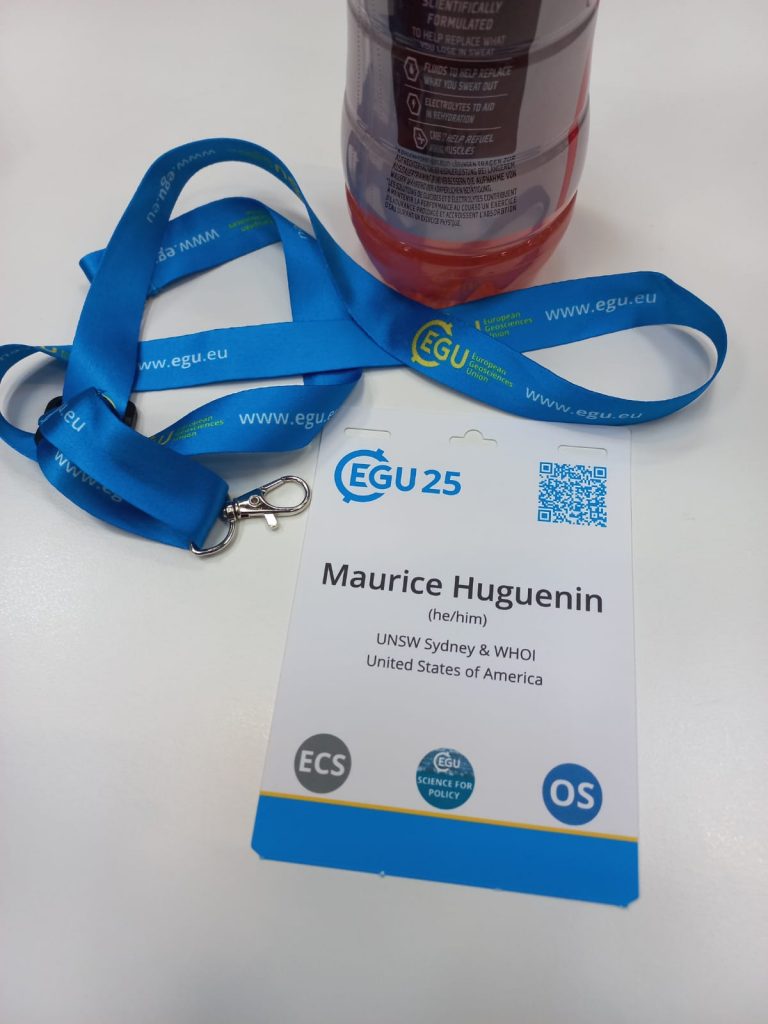
Getting ready for the conference. Photo by Maurice Huguenin.
The week started strong for me. I had a job interview at 8 am on Monday. How nice, perfect to adapt to the jetlag. I made it to the conference a bit later, making use of the free public transport that comes with the conference badge. Thank you EGU! On the underground, I already met a researcher I knew from my time in Australia – how nice to be able to catch up with others who I have not seen in years. Monday afternoon was my first session where I was actively involved in. As a convener of our ‘Southern Ocean in a changing climate’ session, I helped announce speakers, made sure they kept to their eight minute presentation limit and thought about questions to ask in case the audience did not raise any. The after-session drinks and dinner of our Southern Ocean community are always great. It is nice to catch up with others and also get to know new scientists from around the world in a relaxed way. I was surprised by how many in our ~40 people group I knew from previous times. It really is a small world!
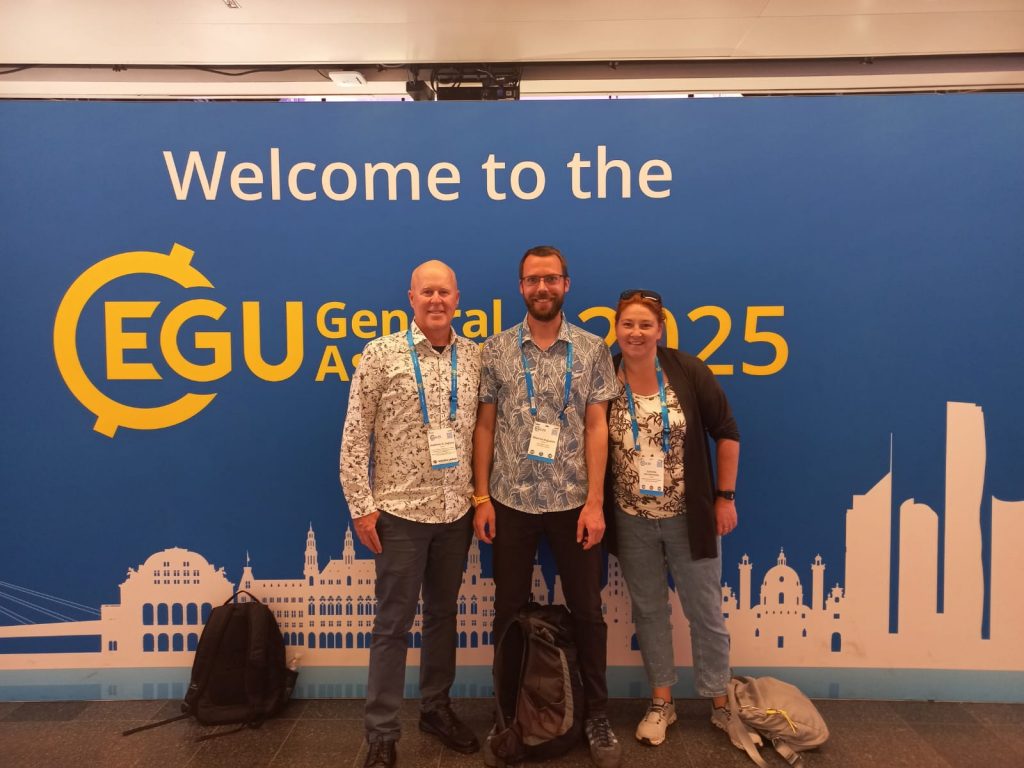
With two of my Postdoc advisors. Photo by Maurice Huguenin.
On Tuesday, it was time for posters in our Southern Ocean session. Lots of interesting new science on new observational data from moorings (stationary instrument lines in the ocean) and Weddell Seal CTDs (data from tiny sensors we put on top of a seal’s head) as well as new insights from changing heat and carbon fluxes down South. I also saw my PhD advisor present our study on the drivers of the extreme 2023 North Atlantic marine heat wave. For lunch, I came prepared this time, bringing a sandwich with me to avoid the long queue times at food stalls around the conference center. Tuesday’s lunch was another type of ‘job-interview’. I had the opportunity to get to know a scientist to whom I sent in my job application for a postdoc position on ocean modelling a few days earlier. Drinks on Tuesday after the sessions ended were followed by a typical Viennese dinner (Wienerschnitzel mit Preiselbeeren + Almdudler) together with a geologist friend of mine from my Bachelor’s education at ETH.
Wednesday came around and it was time to present again. This time I talked about my own research in the ‘Under Cover: The Southern Ocean’s connection to sea ice’ session. My results on the (not so large) impact of the Interdecadal Pacific Oscillation on Weddell and Ross Sea dense shelf water formation were well received and I was able to talk in more detail about my science with multiple people who saw my talk. It is such a rewarding feeling when people approach me and want to learn more about my science. It is also a big motivation moving forward.
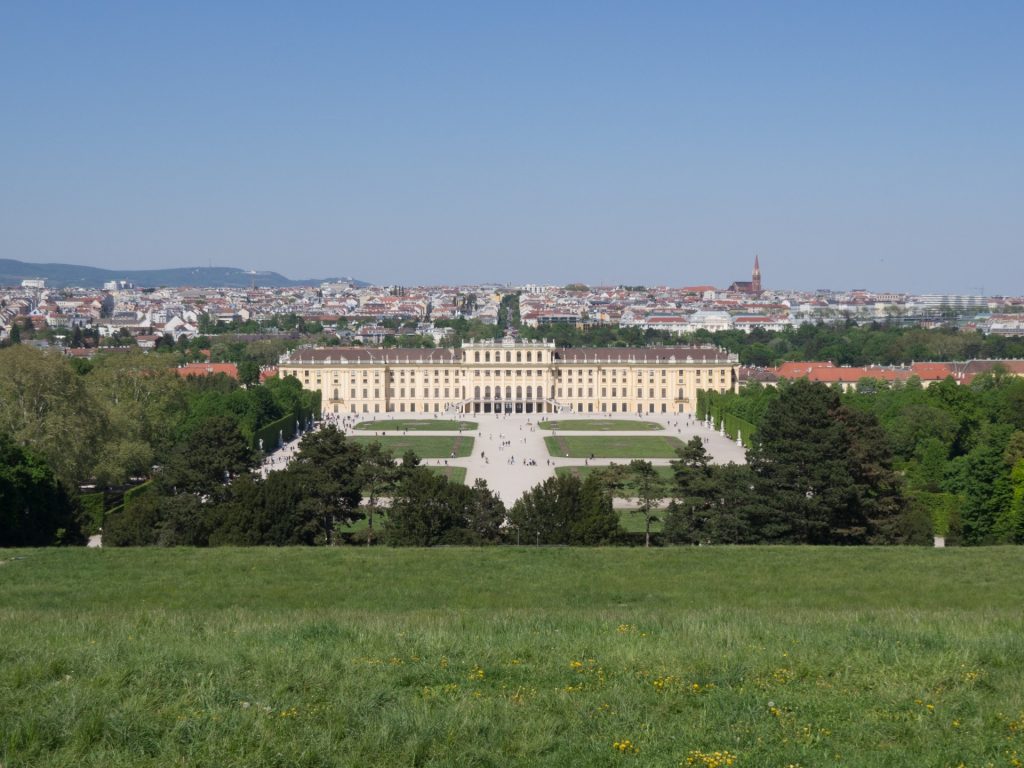
Visiting Schönbrunn Palace just outside Vienna the Sunday before the conference. The mountain range to the left is where 1683 the polish Winged Hussars arrived to lift the siege of Vienna by the Ottoman Empire. This event inspired J.R.R. Tolkien to write a similar cavalry charge in his epic fantasy novel The Lord of the Rings. Photo by Maurice Huguenin.
Thursday morning was exciting too; I had time to catch-up with another scientist friend from my Bachelor’s in Switzerland. These are times I value as they allow me to chat with others who are at the same career stage as me. On this day, I also presented my research in a ‘fun session’ where I was only allowed to use the 1’000 most common English words in the dictionary. That was challenging to prepare because words like ‘ocean’, ‘temperature’ and ‘salinity’ that I use often were not allowed. Instead, I had to refer to descriptions of ‘the big blue body’, ‘hot stuff’ and ‘the white fluffy thing we put on food’. Thankfully, my basic English presentation pitch was only two minutes. It was then followed by a presentation at a touchscreen with slides that also only used those basic words. I had more fun in this session than I anticipated and was impressed by the creativity of other presenters. Thursday evening was another highlight of the week. I was invited for dinner with scientists from Germany and the Netherlands, most of whom I have not met before. It was great learning about their work on sea level rise and the impacts of microplastics focusing on the European region, while sharing my own experience and insights from my PhD and postdoc so far.
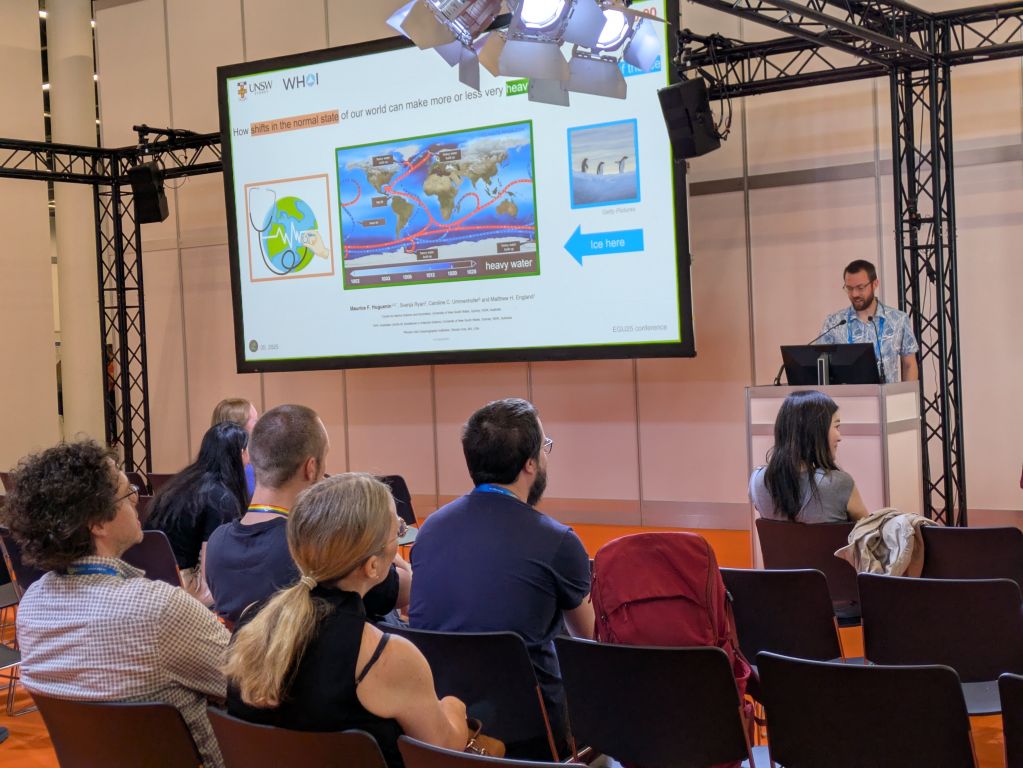
Presenting my science in the Up-Goer Five Challenge session, where I was only allowed to use the 1,000 most common English words. Photo provided by Maurice Huguenin.
Tips on what helped me manage the huge program at EGU in Vienna:
- Looking at the session program well in advance and blocking out important sessions.
- Reaching out in advance to people with whom I really wanted to talk (about science but also just about live in academia).
- Scheduling time for myself to recharge. I went to the Post office & a chocolate cake store in the city center during a time when no session on my own science field was running. Well worth it!
- Trying to meet at least one new person a day.
- Keeping an open circle (like a Pacman) for people to join a discussion when talking in a group.
- Buying lunch in advance to skip the 40 minute food stall queues.
I am grateful for the funding provided by the Australian Centre for Excellence in Antarctic Science, the European Geophysical Union and the Polar Science Early Career Community Office that allowed me to attend this conference.
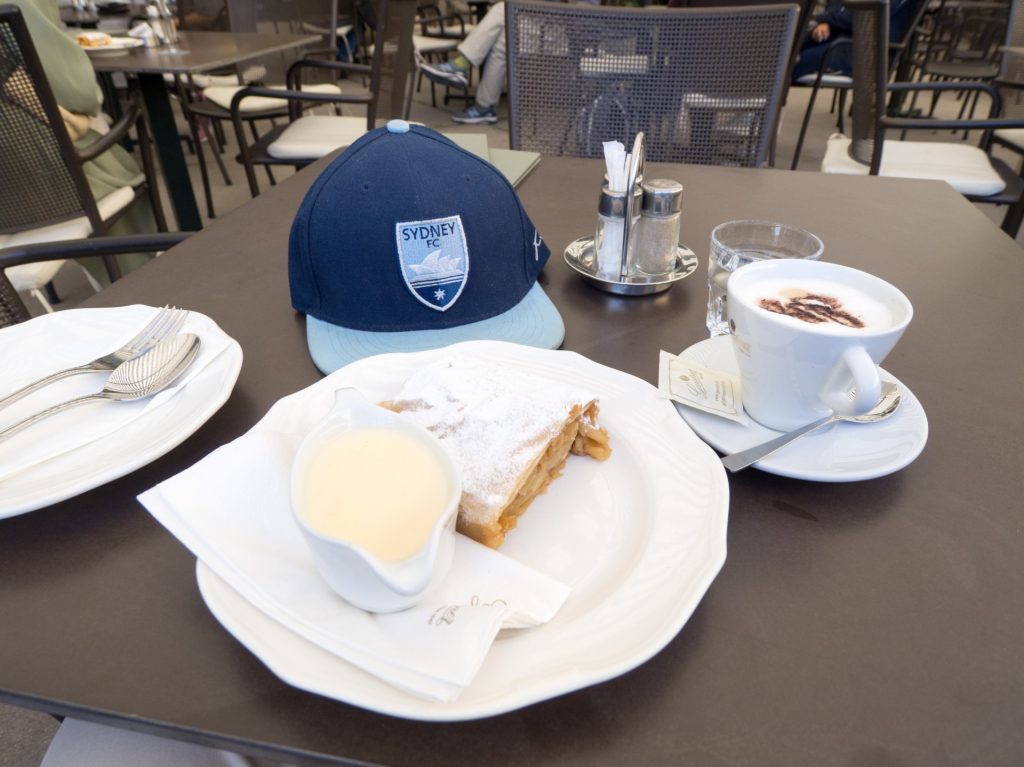
Having the, what I deemed myself obligatory, Apfelstrudel in Vienna.
